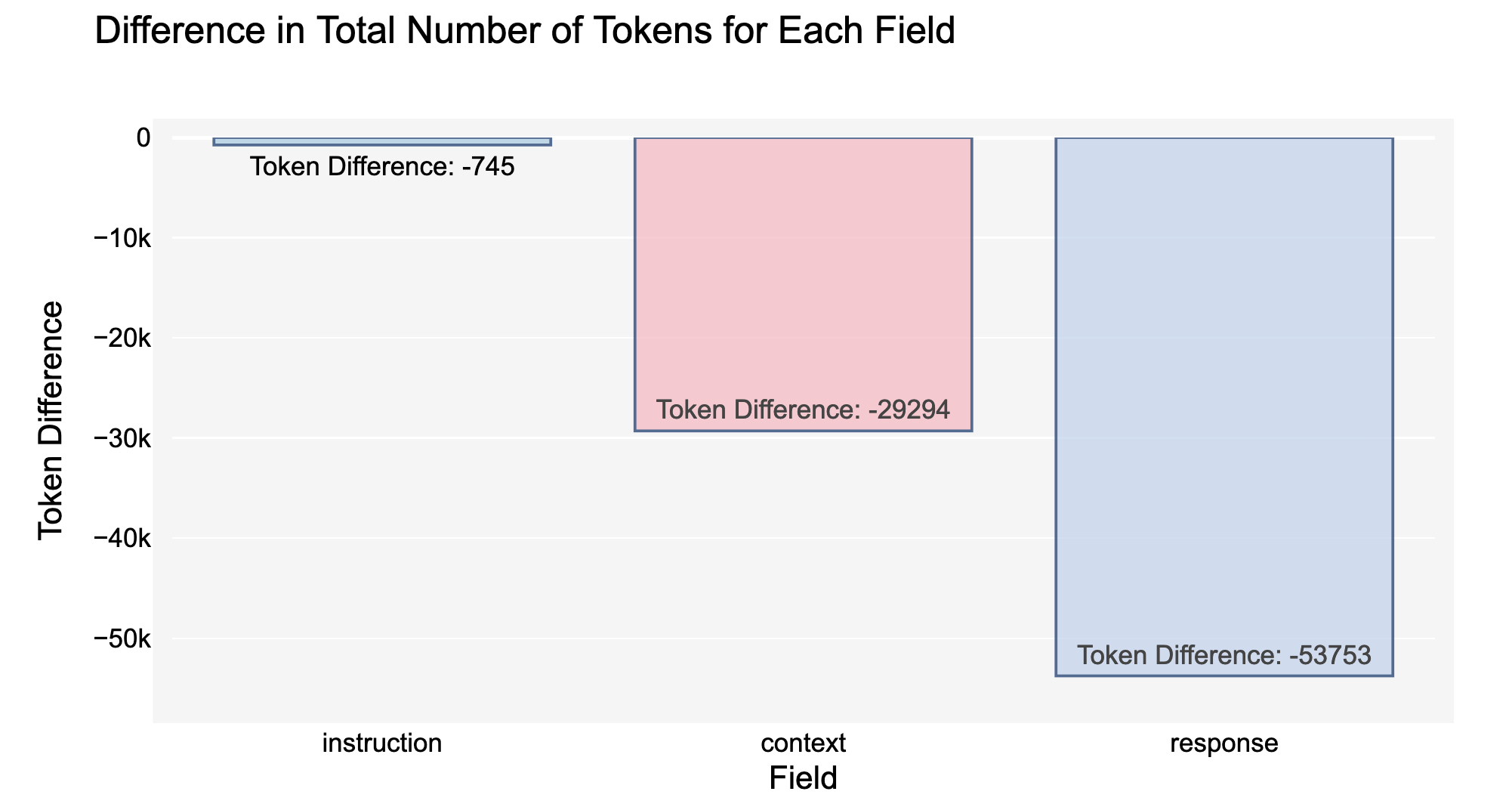Datasets:
dataset_info:
features:
- name: instruction
dtype: string
- name: context
dtype: string
- name: response
dtype: string
- name: category
dtype: string
- name: instruction_original_en
dtype: string
- name: context_original_en
dtype: string
- name: response_original_en
dtype: string
- name: id
dtype: int64
splits:
- name: de
num_bytes: 25985140
num_examples: 15015
- name: en
num_bytes: 24125109
num_examples: 15015
- name: es
num_bytes: 25902709
num_examples: 15015
- name: fr
num_bytes: 26704314
num_examples: 15015
download_size: 65586669
dataset_size: 102717272
license: cc-by-sa-3.0
task_categories:
- text-generation
- text2text-generation
language:
- es
- de
- fr
tags:
- machine-translated
- instruction-following
pretty_name: Databrick Dolly Instructions Multilingual
size_categories:
- 10K<n<100K
Dataset Card for "databricks-dolly-15k-curated-multilingual"
A curated and multilingual version of the Databricks Dolly instructions dataset. It includes a programmatically and manually corrected version of the original en dataset. See below.
STATUS:
Currently, the original Dolly v2 English version has been curated combining automatic processing and collaborative human curation using Argilla (~400 records have been manually edited and fixed). The following graph shows a summary about the number of edited fields.
Table of Contents
- Table of Contents
- Dataset Description
- Dataset Structure
- Dataset Creation
- Considerations for Using the Data
- Additional Information
Dataset Description
- Homepage: https://huggingface.co/datasets/argilla/databricks-dolly-15k-multilingual/
- Repository: https://huggingface.co/datasets/argilla/databricks-dolly-15k-multilingual/
- Paper:
- Leaderboard:
- Point of Contact: contact@argilla.io, https://github.com/argilla-io/argilla
Dataset Summary
This dataset collection is a curated and machine-translated version of the databricks-dolly-15k dataset originally created by Databricks, Inc. in 2023.
The goal is to give practitioners a starting point for training open-source instruction-following models with better-quality English data and translated data beyond English. However, as the translation quality will not be perfect, we highly recommend dedicating time to curate and fix translation issues. Below we explain how to load the datasets into Argilla for data curation and fixing. Additionally, we'll be improving the datasets made available here, with the help of different communities.
Currently, the original English version has been curated combining automatic processing and collaborative human curation using Argilla (~400 records have been manually edited and fixed). The following graph shows a summary of the number of edited fields.
The main issues (likely many issues still remaining) are the following:
- Some labelers misunderstood the usage of the
contextfield. Thiscontextfield is used as part of the prompt for instruction-tuning and in other works it's calledinput(e.g., Alpaca). Likely, the name context, has led to some labelers using it to provide the full context of where they have extracted the response. This is problematic for some types of tasks (summarization, closed-qa or information-extraction) because sometimes the context is shorter than or unrelated to summaries, or the information cannot be extracted from the context (closed-qa, information-extraction). - Some labelers misunderstood the way to give instructions for summarization or closed-qa, for example, they ask: Who is Thomas Jefferson? then provide a very long context and a response equally long.
We programmatically identified records with these potential issues and ran a campaign to fix it and as a result more than 400 records have been adapted. See below for statistics:

As a result of this curation process the content of the fields has been reduced, counted in number of tokens, especially for the responses:
If you want to browse and curate your dataset with Argilla, you can:
- Duplicate this Space. IMPORTANT: The Space's Visibility need to be Public, but you can setup your own password and API KEYS following this guide.
- Setup two secrets:
HF_TOKENandLANGfor indicating the language split - Login with
admin/12345678and start browsing and labelling. - Start labeling. Every 5 min the validations will be stored on a Hub dataset in your personal HF space.
- Please get in touch to contribute fixes and improvements to the source datasets.
There's one split per language:
from datasets import load_dataset
# loads all splits
load_dataset("argilla/databricks-dolly-15k-curate-multilingual")
# loads Spanish splits
load_dataset("argilla/databricks-dolly-15k-curated-multilingual", split="es")
Supported Tasks and Leaderboards
As described in the README of the original dataset, this dataset can be used for:
- Training LLMs
- Synthetic Data Generation
- Data Augmentation
Languages
Currently: es, fr, de, en
Join Argilla Slack community if you want to help us include other languages.
Dataset Structure
Data Instances
[More Information Needed]
Data Fields
[More Information Needed]
Data Splits
There's one split per language:
from datasets import load_dataset
# loads all splits
load_dataset("argilla/databricks-dolly-15k-multilingual")
# loads Spanish splits
load_dataset("argilla/databricks-dolly-15k-multilingual", split="es")
Dataset Creation
These datasets have been translated using the DeepL API from the original English dataset between the 13th and 14th of April
Curation Logbook
- 28/04/23: Removed references from Wikipedia copy pastes for 8113 rows. Applied to context and response fields with the following regex:
r'\[[\w]+\]'
Source Data
Initial Data Collection and Normalization
Refer to the original dataset for more information.
Who are the source language producers?
[More Information Needed]
Annotations
Annotations are planned but not performed yet.
Annotation process
[More Information Needed]
Who are the annotators?
[More Information Needed]
Personal and Sensitive Information
[More Information Needed]
Considerations for Using the Data
Social Impact of Dataset
[More Information Needed]
Discussion of Biases
[More Information Needed]
Other Known Limitations
[More Information Needed]
Additional Information
Dataset Curators
[More Information Needed]
Licensing Information
This dataset can be used for any purpose, whether academic or commercial, under the terms of the Creative Commons Attribution-ShareAlike 3.0 Unported License.
Original dataset Owner: Databricks, Inc.
Citation Information
[More Information Needed]
